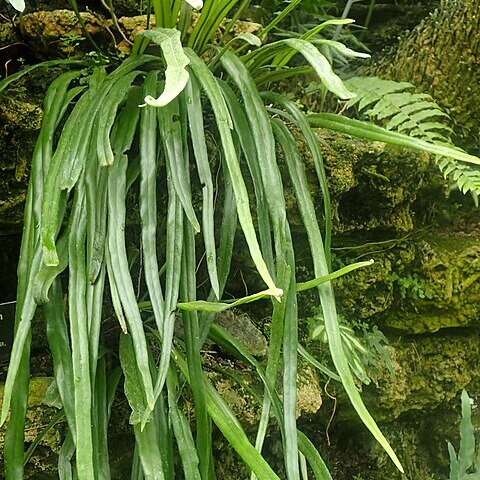Plants 20-50 cm tall. Rhizome long creeping, 1.8-2.7 mm in diam., in cross section with many scattered sclerenchyma strands; phyllopodia 2-6 cm apart, lateral buds alternating with phyllopodia. Scales peltate, 1-3.4 × 0.6-1.5 mm, shiny brown or blackish with a distinct, light colored, entire margin. Fronds monomorphic, distinctly to indistinctly stipitate; stipe 1.5-5 cm; lamina strap-shaped, 16-60 × 1-3 cm, often ± narrowed in fertile part, base ± gradually narrowed, apex acute to rounded. Hydathodes absent. Indument sometimes fugacious, monomorphic, sparse or thin; hairs 0.3-0.4 mm in diam., with appressed, boat-shaped rays. Sori sunken, with central bundle of stellate paraphyses. Sporangia with stalks up to 2 × as long as capsule.
Rhizome long-creeping, branched, 1.5-4 mm diam. Scales narrowly ovate, (1–) 2.5–5 mm long, 0.9–1.5 mm wide, appressed, shiny, dark to blackish brown in the middle, with pale chartaceous entire to ragged margins. Fronds erect to pendulous, 3–66 cm long. Stipes scattered, winged to base, (0–) 0.6–6 (–10) cm long. Lamina long, narrow, fleshy, recurved, 0.7–3.6 cm wide; apical portion narrowest; upper surface pale green, glabrous; lower surface silvery grey, covered with a close thin layer of interlacing hairs; midrib raised beneath. Sori round, 0.5–1.2 mm diam., crowded in 4–8 rows on either side of midrib, reaching half to nearly three-quarters of the way down lamina. Spores 47.5–75 µm long, 27.5–40 µm wide, irregularly verrucose.

